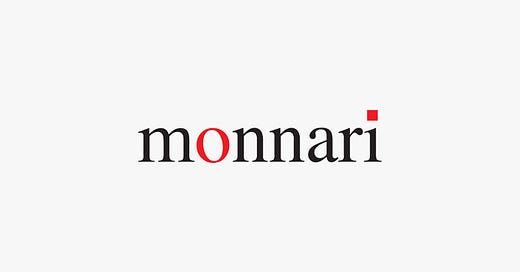Monnari Trade S.A. (MON.WA)
Polish founder led and owned micro cap trading at 66% of NCAV, EV/EBIT of 5.11x, and p/b of 0.58x amidst a new buyback programme, insider buying, and other multiple catalysts.
Key Facts
Description: Monnari is a Polish producer and retailer of women’s fashion clothes and accessories, which it sells under its brands of Monnari and Femestage. It operates predominantly in Poland and sells through a few channels with the main one being its stores in shopping malls, but it also franchises some of its stores located on high streets and sells b2b and online through its e-commerce channel. It’s a de facto net-net with a long history of profitability and management returning the value to the shareholders in the form of buybacks and active cash allocation. The company was founded in 1998 and is headquartered in Łódź, Poland.
Track record: Since 2012, it has only lost money in 2020 during Covid. During the other 11 years, it was net income positive and has grown its revenue from 131.8 million PLN in 2012 to 287.7 million in 2022 (8.1% CAGR) all whilst improving the gross margin from 52.5% to 57.2%. The management repurchased 15% of all the shares between 2016 and 2020 and allocated the cash in investments (i.e. real estate and short-term loans) above the inflation rates.
Market cap: Its market cap as of the 15th of September 2023 is ~159 million PLN (36.53 million). It has grown 20.3% year-to-date. It is also ~92.9% up from its 52-week low.
Valuation: MON.WA trades at a 44% discount to its Net Current Asset Value (NCAV), , it has a large redeveloped high-quality real estate that’s rented out and is valued at cost at almost half of the market cap, the management is repurchasing shares (15% of all since 2016), insider buying, and proactive cash allocation in bonds, short-term loans, and real estate investments, and potential M&As. In 2022 it sold part of its real estate portfolio and realised approximately half of its market cap in cash. All the multiples are well below the industry averages and should increase as the management realises more value.
Business Overview
Background and Strategy
Monnari is a fairly sizable Polish producer and retailer of women’s fashion clothes and accessories. It sells blouses, jackets, coats, trousers, skirts, dresses, sweaters, T-shirts, jackets, and various accessories such as shoes, handbags, jewellery, shawls, hats, and gloves. All under Monnari or Femestage brands. It targets women aged 30 and above and as such addresses a specific niche. Femestage is a newer and less established brand that targets younger women in their 20s.
The company’s strategy has historically revolved around placing its stores and outlets in large shopping malls in major cities in Poland. It tends to purchase the lots where it builds its own stores and only 17% of Monnari stores are leased. The products are in the “semi-premium” pricing range as they tend to build a more luxurious brand image whilst selling at above-typical shopping mall fashion store prices like those of H&M or C&A. However, they sell for much less than actual luxury brands and are quite accessible.
(Typical Monnari store in a shopping mall)
The Monnari brand stores are usually 200 to 300 square metres large and Femestage around 160 square metres. The store count has grown steadily with a clear slow-down in 2020 and 2021 due to the pandemic. Due to its reliance on shopping mall sales, it was hit heavily in those years and lost money for the first time since 2011 as the lockdowns and restrictions made shopping in malls impossible. The earnings recovered from a ~28 million PLN EBIT loss in 2020 to an EBIT of 17.6 million and 28.1 million in 2021 and 2022 respectively.
The management’s key takeaway from the pandemic loss and shopping mall closures in 2020 was to alter the strategy by adding a new sales channel and investing more in e-commerce. The new channel is a franchise, which Monnari decided to start selling to outside franchisees who often own stores on high streets that are less impacted by Covid (the mall shopper count has not returned to the 2019 levels yet). Meanwhile, e-commerce accounted for 22% of revenue in 2022 and the management is trying to increase that share as it has the obvious advantage of higher margins and lower costs.
Store count and selling area growth over the last 6 years:
Keep reading with a 7-day free trial
Subscribe to Bebop Value to keep reading this post and get 7 days of free access to the full post archives.




